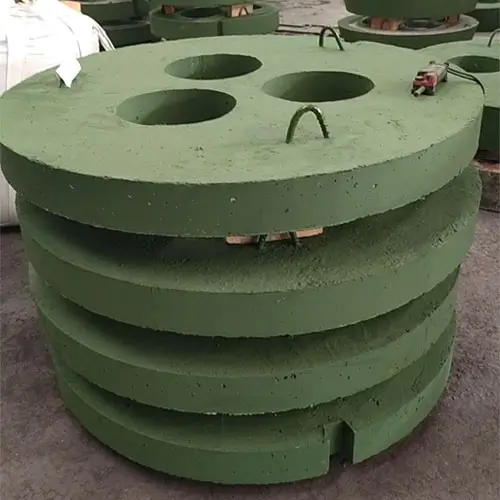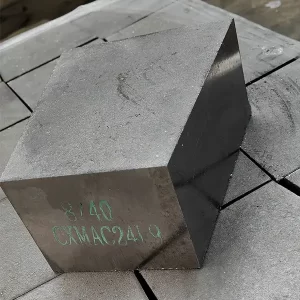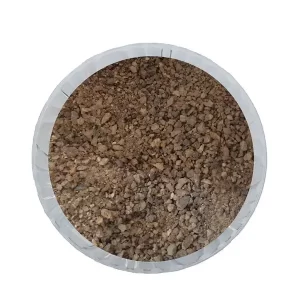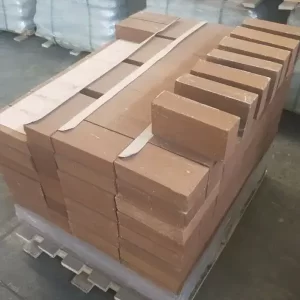EAF Cover Introduction:
The electric furnace cover is subjected to high temperature and rapid cooling and heating, which places high demands on refractory materials. The refractory materials used in the electric furnace cover in my country have evolved from the large pieces of special-shaped siliceous composite bricks initially used to the unburned high-alumina bricks prepared by adding various binders (water glass, phosphoric acid, aluminum dihydrogen phosphate, etc.), or the introduction of sillimanite mineral raw materials in the ingredients, the addition of micropowder, spinel, silicon carbide, etc. In recent years, various types of refractory castables have been developed to meet the needs of the development of ultra-high power electric furnaces.
Compared with ordinary brick electric furnace roof, it has the advantages of convenient construction, good integrity, strong arc radiation resistance, and rapid cooling and heating resistance. The preforms made of castables can be used after being baked at 400-600ºC, and the effect is good. The electrode ferrule is made of chromium corundum castable, which has strong radiation resistance.
EAF Cover Advantages:
The prefabricated parts of the electric furnace cover are developed to prolong the service life of the electric furnace roof. There are two types: high-aluminum and corundum. Compared with ordinary brick electric furnace roof, it has the advantages of convenient construction, good integrity, strong resistance to arc radiation, and resistance to rapid cooling and heating. The preforms made of castables can be used after being baked at 400-600ºC, and the effect is good. The use times of high aluminum is 80-110 times, and the use times of corundum is 160-220 times.
The life of the electric furnace cover is also a technical indicator that directly affects the production efficiency of the electric furnace. In the past, materials such as aluminum carbon bricks were used, but the main damage area was the “triangle area” of the three electrodes. In order to improve production efficiency, chrome corundum prefabricated furnace covers are used, and the service life is greatly increased.
EAF Cover Application:
The electrode holes of the electric furnace cover are very easy to peel off under the attack of high temperature, rapid cooling and rapid heating. If the electric furnace roof bricks are used, the umbrella-shaped furnace roof is also prone to refractory brick peeling due to thermal expansion and contraction.
Currently, there are two methods used in the market: electric furnace roof bricks and integral prefabricated parts. The use of electric furnace roof bricks requires the combination of several brick types for masonry. During the masonry process, the tightness of the brick seams is very important, and sometimes even cut bricks are used to squeeze the entire umbrella-shaped furnace roof. If the masonry is not compact, the refractory bricks will fall off within 40 days of use, and some of them will make the entire furnace roof unusable due to partial falling.
Now many manufacturers use the overall prefabrication method, which is divided into two methods. One is the casting method with a flat bottom of the entire furnace cover. This method is heavy, thick, and has a long service life. This method will reduce the furnace lining space and requires the approval of the manufacturer. If some furnace covers are too large, this method is not used because they are too heavy or too thick to be formed. Another prefabrication method is to cast the umbrella-shaped structure in accordance with the original furnace top shape. This method has a large furnace lining space, but the casting mold is very difficult to make. Although the overall weight of the furnace cover is lighter, the cost will be relatively higher due to mold problems. However, no matter which casting method is used, the manufacturer needs to cooperate.




Reviews
There are no reviews yet.